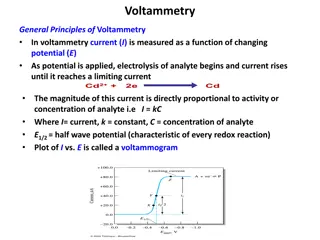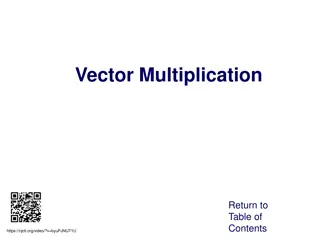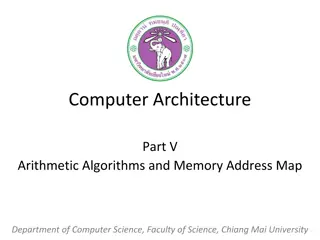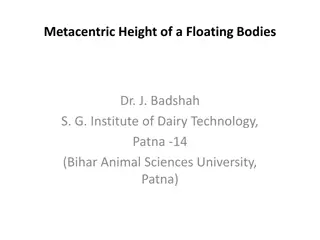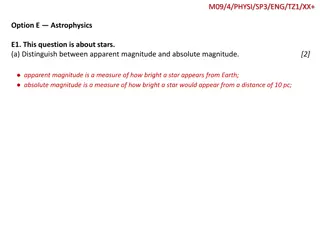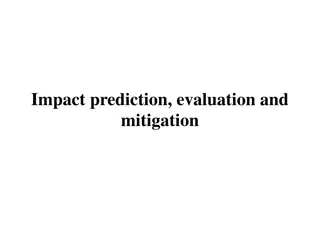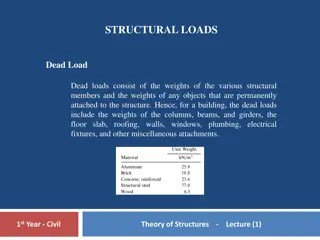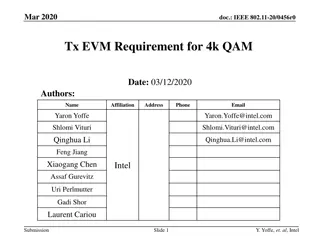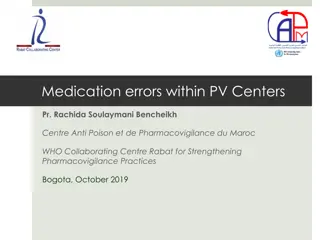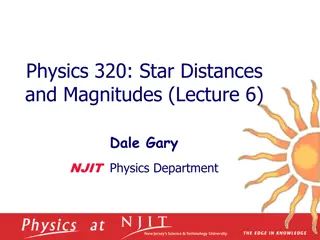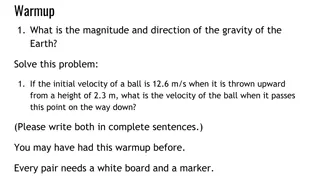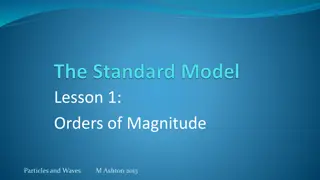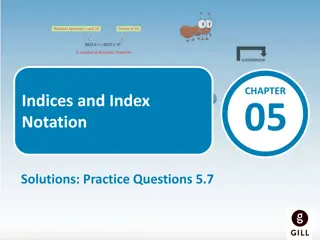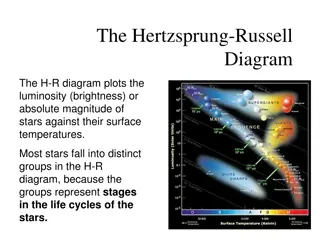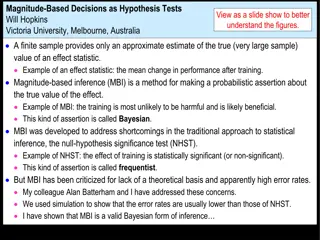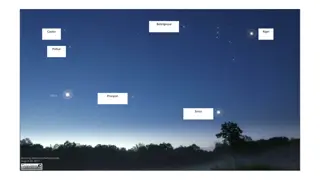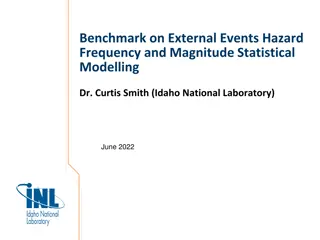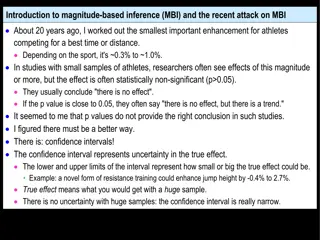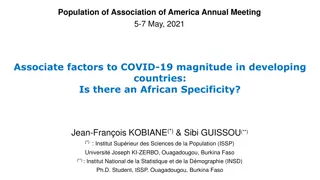Exploring Our Sun, Galaxy, and Beyond
Delve into the fascinating world of the sun, our galaxy, and the vast expanse of space. Learn about the sun being a star at the center of our solar system, the planets orbiting it, the diversity of stars in the universe, and the Milky Way galaxy that we call home. Discover Proxima Centauri, our clos
1 views • 22 slides
Solving Sensitive Healthcare Challenges
Address the background, magnitude, proposed solution, potential impact, existing market solutions, implementation challenges, and expertise needed to solve sensitive healthcare issues effectively.
1 views • 14 slides
Understanding Graded Dose-Response Relationships in Pharmacodynamics
Graded dose-response relationships in pharmacodynamics involve how drug effects depend on concentrations at receptor sites. The potency and efficacy of drugs can be determined through these relationships. Potency refers to the amount of drug needed for a specific effect, while efficacy relates to th
0 views • 32 slides
Understanding Signed Integers and Addition in Computational Systems
Dive into the world of signed integers, extensions, truncations, and addition in computer science with a focus on how negative values are represented and operated on. Explore concepts like sign-magnitude and two's complement representations, uncovering the intricacies of handling integers in computa
5 views • 25 slides
Understanding Motion Along a Straight Line
Exploring kinematics in the context of motion along a straight line, this chapter delves into parameters like displacement, velocity, speed, and acceleration. Kinematics is distinguished from dynamics, focusing on how objects move without delving into why. Displacement, a key concept, is discussed a
6 views • 60 slides
Urgent Support Needed: Nepal Earthquake Relief Efforts
A devastating 7.8 magnitude earthquake hit Nepal, causing widespread damage and leaving 2.8 million people homeless. Families are desperate for shelter as monsoon rains approach. Habitat is mobilizing engineers to assess damage, provide emergency shelter kits, and support long-term rebuilding effort
2 views • 16 slides
Understanding Voltammetry: Principles and Applications
In voltammetry, current is measured as a function of changing potential. The magnitude of current is directly proportional to the activity or concentration of the analyte. A voltammogram is plotted between current and potential, showing the characteristic half-wave potential. The process involves a
6 views • 76 slides
Impact of Medical-Legal Claims on Provincial Budgets Briefing
The briefing discusses the impact of medical-legal claims on provincial budgets, focusing on strategies and solutions to manage medico-litigation efficiently. It covers the magnitude of the problem, provision of future medical treatment, implementation of court decisions, and national interventions.
7 views • 19 slides
Understanding Magnitude Comparators in Digital Circuits
A magnitude comparator is a crucial component in digital circuits used to compare two numbers and determine their relative magnitudes. This comparison involves checking if one number is greater than, less than, or equal to the other. By analyzing the algorithm for equality and inequality, we can gra
7 views • 9 slides
Understanding Power Transfer and Impedance Matching in Circuits
Exploring the concept of maximizing power transfer between a source and load through impedance matching. Learn about complex conjugates, real and magnitude of complex numbers, average power in circuits, and the importance of minimizing reflected power. Discover how incident, reflected, and delivered
3 views • 33 slides
Vector Multiplication
Learn about vector multiplication, unit vectors, magnitude calculations, scalar dot products, cross products, and angle determinations between vectors. Explore video explanations and visual representations for a comprehensive understanding of vector mathematics concepts.
0 views • 11 slides
Financial Forecast and Challenges for AHS
AHS operates with a Net Negative Balance (NNB) structured like a loan, facing challenges with timing and magnitude of supplemental payments. Strategic planning and efficiency improvements are crucial for financial viability. The forecast shows expense inflation outpacing revenue growth, necessitatin
0 views • 8 slides
Computer Architecture: Arithmetic Algorithms and Memory Address Mapping
Exploring the intricate world of computer architecture, this study delves into the realms of signed-magnitude addition and subtraction, multiplication operations, and memory address mapping for microprocessors. It uncovers the hardware components involved in these operations, such as registers, flip
1 views • 24 slides
Enhancing Geotechnical Investigation Methods in Ghana for Foundation Design of Large Structures
Enhancing the standard of geotechnical investigation field testing in Ghana is crucial to ensure appropriate use of equipment like DCP for designing foundations of large structures. Objectives include assessing site suitability, obtaining design inputs, anticipating construction challenges, and esti
0 views • 31 slides
Understanding Metacentric Height of Floating Bodies
Metacentric height is a crucial measure of a floating body's stability, such as a ship. It refers to the distance between the center of gravity (G) and the metacentre (M). The magnitude of the righting couple and the calculation methods for metacentric height are discussed in detail. Proper design c
0 views • 7 slides
Exploring Stars, Cosmic Microwave Background Radiation, and Big Bang Evidence
Learn about stars, distinguish between apparent and absolute magnitude, compare luminosities and distances of different stars, analyze black body spectrum in cosmic microwave background radiation, understand evidence supporting the Big Bang model, and describe characteristics of red supergiant stars
0 views • 35 slides
Understanding Impact Prediction, Evaluation, and Mitigation
Impact prediction involves identifying the magnitude and significance of environmental changes due to a project or action. It is crucial to assess both direct and indirect effects on various aspects such as human beings, flora, fauna, geology, land, water, air, and climate. Evaluating these effects
1 views • 12 slides
Understanding Resolutions and Triangle of Forces in Physics
Resolutions of forces involve breaking down a force into components, while the Triangle of Forces explores how forces interact in equilibrium. By analyzing graphical and mathematical representations, you can determine the resultant force and its direction using trigonometric functions. Applying the
1 views • 11 slides
Understanding Structural Loads in Civil Engineering
Structural loads in civil engineering encompass dead loads from permanent structures, live loads that vary in magnitude and location, impact factors influencing rapid load application, wind loads due to blocked airflow, earthquake loads, and hydrostatic pressures for water-retaining structures. Thes
1 views • 6 slides
Understanding DC Motors: Principles and Operations
The introduction to DC motors covers the types of DC machines, such as generators and motors, and explains how they convert energy. By exploring the force on a current-carrying conductor in a magnetic field, the principles behind DC motor operation are clarified. The magnitude and direction of force
0 views • 20 slides
Magnetic Force and Acceleration of Electrons in Television Picture Tubes
An electron in a television picture tube is analyzed as it moves towards the front of the tube in a magnetic field. The magnetic force and acceleration of the electron are calculated, along with determining the linear speed of a proton moving in a circular orbit under a magnetic field. Additionally,
0 views • 6 slides
Understanding the Conjugate Beam Method in Structural Analysis
The Conjugate Beam Method is a powerful technique in structural engineering, derived from moment-area theorems and statical procedures. By applying an equivalent load magnitude to the beam, the method allows for the analysis of deflections and rotations in a more straightforward manner. This article
1 views • 11 slides
IEEE 802.11-20/0456r0: Transmission EVM Requirements for 4k QAM
The document discusses the tradeoff between error vector magnitude (EVM) and transmission power in the context of 4k QAM modulation. It explores the EVM requirements for 4k QAM and addresses issues such as channel estimation errors, modulation and coding scheme (MCS) parameters, and degradation with
0 views • 11 slides
Understanding Medication Errors in Pharmacovigilance Centers
Adverse drug reactions resulting from medication errors are a significant concern faced by pharmacovigilance centers. This content discusses the importance of this problem, contributing factors, the relevance to pharmacovigilance centers, and strategies for managing medication errors. It highlights
4 views • 29 slides
Electric Properties of Colloids in Liquid Media: Charging Mechanisms and Electrokinetic Phenomena
Colloidal particles dispersed in liquid media can acquire a charge through selective adsorption of ionic species or ionization of surface groups. This leads to electrokinetic phenomena like electrophoresis, electro-osmosis, sedimentation potential, and streaming potential. The stability of colloids
2 views • 16 slides
Exploring the Magnitude of Genesis 1:1 Through Creation and Promise
In Genesis 1:1, the fundamental knowledge of God's creation unfolds, emphasizing His glory and magnitude. The passage delves into the concept of God as Elohim, existing in the Father, the Son, and the Holy Spirit from the beginning. Through creation, God formed the Earth, establishing the cardinal d
0 views • 14 slides
Understanding Stellar Distances and Brightness in Astronomy
Exploring the methods used in astronomy to determine star distances, from stellar parallax to advanced measurements with spacecraft like Gaia. Delve into the magnitude scale and the concept of apparent magnitude in measuring star brightness.
3 views • 13 slides
Understanding Probabilities of Success in Clinical Trials
Exploring the concept of probabilities of success in clinical trials, this webinar discusses the assessment of new treatments, development plans, and success criteria. It covers factors like power, probability of success, and assurance in decision-making processes, emphasizing the consideration of a
0 views • 21 slides
Understanding Pharmacodynamics: Potency and Efficacy
Pharmacodynamics explores how drugs interact with receptors in the body, affecting the magnitude of drug effects based on concentration. Graded dose-response relationships, potency, and efficacy play key roles in determining drug efficiency. Potency reflects the amount of drug needed for a specific
0 views • 21 slides
Introduction to Vectors and Scalars in Physics
Explore the concept of vectors and scalars in physics through a series of warm-up exercises, quizzes, and group problems. Understand the differences between quantities with magnitude and direction versus those with magnitude only. Practice solving problems involving velocity, displacement, and more
0 views • 25 slides
Pediatric Evacuation in Response to 7.7 Magnitude Earthquake
Central Arizona Fire and Medical Authority Fire Chief, Scott Freitag, coordinates pediatric evacuation efforts following a 7.7 magnitude earthquake in Southern California. Numerous hospitals report structural damages necessitating the evacuation of pediatric patients who require specialized care and
0 views • 19 slides
Exploring Orders of Magnitude in Particle Physics and Waves
Delve into the world of particle physics and waves with a focus on orders of magnitude. Learn how scientific notation and powers of 10 help us understand scales ranging from sub-nuclear lengths to the vast expanses of the universe. Discover the challenges of visualizing extreme scales and enhance yo
0 views • 5 slides
Understanding Orders of Magnitude in Numbers
Explore how to determine the orders of magnitude in different numbers through a series of practice questions. Understand the significance of the power of 10 representation in indicating the scale of numbers, from large to small values.
0 views • 31 slides
Understanding Stars: The Hertzsprung-Russell Diagram and Stellar Properties
The Hertzsprung-Russell Diagram is a tool that plots the luminosity or absolute magnitude of stars against their surface temperatures, revealing distinct groups that represent stages in the stars' life cycles. Apparent magnitude measures how bright a star appears from Earth, while absolute magnitude
0 views • 16 slides
Understanding Magnitude-Based Decisions in Hypothesis Testing
Magnitude-based decisions (MBD) offer a probabilistic way to assess the true effects of experiments, addressing limitations of traditional null-hypothesis significance testing (NHST). By incorporating Bayesian principles and acknowledging uncertainties, MBD provides a robust framework for drawing co
1 views • 22 slides
Understanding Stellar Brightness and Magnitude Distances
Explore the relationship between a star's brightness as observed from Earth and its actual brightness, distance, apparent magnitude, and absolute magnitude. Learn how to calculate these values using data and formulas. Gain insights into the variations in star distances, brightness, and magnitudes to
0 views • 6 slides
Statistical Modelling of Hazard Frequency and Magnitude in External Events
Dr. Curtis Smith from Idaho National Laboratory presented a benchmark on External Events Hazard Frequency and Magnitude Statistical Modelling. The background involves the Working Group on External Hazards (WGEV) addressing the challenges in formulating and assessing external event initiating events
0 views • 11 slides
Understanding Magnitude-Based Inference (MBI) - A New Approach to Analyzing Study Results
Magnitude-Based Inference (MBI) offers a novel perspective on interpreting study outcomes by focusing on confidence intervals rather than solely relying on p-values. This approach helps researchers make more informed decisions, especially in studies with small samples where p-values may lead to misl
0 views • 22 slides
Introduction to Stars: Properties, Brightness, and Magnitudes
Stars are fundamental celestial objects that burn matter through nuclear fusion, revealing critical physical properties such as temperature, luminosity, and composition. This lecture explores the magnitude system, color-magnitude diagrams, and the concept of brightness in stars. Understanding stars
0 views • 41 slides
Factors Influencing COVID-19 Magnitude in Developing Countries: African Specificity
An exploration of factors influencing the magnitude of COVID-19 in developing countries, with a focus on any African specificity. The study uses diverse data from various developing countries to investigate the impact of demographic, economic, social service access, environmental, climatic, and heal
0 views • 16 slides






